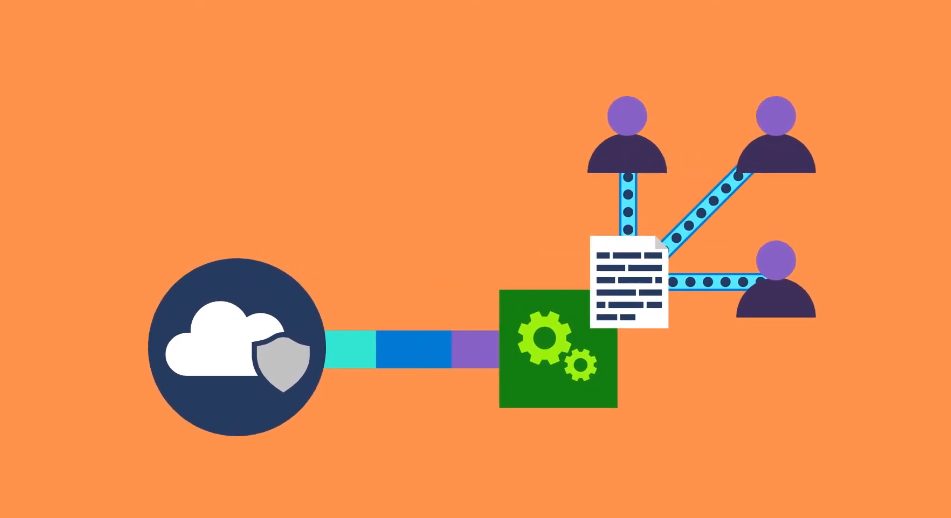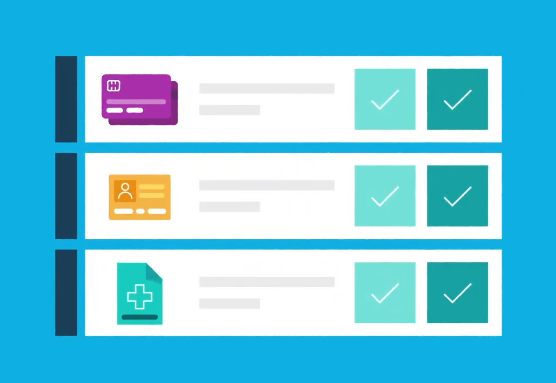Introduction
Definition of Equivalence Class
An equivalence class is a technique used in data privacy to group similar data elements into distinct sets with equivalent characteristics. It involves partitioning different inputs and outputs of a system into subsets that have the same behavior. Equivalence classes are formed based on the similarity between test cases and their expected results, which helps to identify potential defects in a system.
Importance of Equivalence Class in Data Privacy
In data privacy, equivalence classes are used to partition sensitive information into groups based on their attributes such as age, gender, income level, etc. This technique enables organizations to apply different levels of protection and access controls based on the sensitivity level of each group. By doing so, organizations can achieve optimal security without compromising their operational efficiency.
Moreover, understanding equivalence classes in data privacy can help organizations comply with various regulatory requirements such as GDPR and HIPAA. These regulations require companies to implement appropriate safeguards for protecting personal information from unauthorized access or disclosure. A well-designed equivalence class strategy can help companies identify potential vulnerabilities and implement effective measures to mitigate them while maintaining compliance with these regulations.
Types of Data Privacy
Personal Data

Personal data refers to any information that can be used to identify an individual, such as their name, address, phone number, email address, or date of birth.
Sensitive Personal Data

Sensitive personal data includes more private information such as medical records, financial details or criminal records. Sensitive personal data requires extra protection due to its potential misuse by unauthorized individuals. It is important for organizations to have strict policies in place regarding the collection and storage of sensitive personal data.
Non-Personal Data

Non-personal data refers to information that does not identify any individual and does not contain any personal information. Equivalence classes help to maintain the anonymity of non-personal data by grouping it into categories based on similarities, such as location or interests.
Anonymous Data
Anonymous data refers to information that does not identify any individuals or entities. This type of data is often used for research purposes, and it can provide valuable insights into various topics without compromising the privacy of the people involved.
Understanding Data Classification
Data Classification Levels

Data classification is the process of categorizing data according to its sensitivity, value, and confidentiality. By doing this, an organization can determine how to protect the data and who has access to it. There are generally four levels of data classification: public, internal use only, confidential, and highly confidential.
Public information refers to data that is intended for public consumption and does not require any special security measures. Internal use-only information includes non-public information that should only be accessed by authorized personnel within an organization. Confidential information pertains to sensitive personal or corporate details that require additional safeguards against unauthorized access or disclosure. Highly confidential information is typically reserved for the most sensitive types of data such as trade secrets or personal identifiable information (PII).
Understanding Equivalence Class in Data Privacy
Definition of Equivalence Class in Data Privacy
Equivalence Class in Data Privacy is an essential concept for understanding how to effectively protect sensitive information. In simplistic terms, Equivalence Class is the grouping of data that is treated as equal in terms of privacy protection. It is a method used to classify data into different categories based on their level of sensitivity and importance.
Why is Equivalence Class Important in Data Privacy?
The classification is important because it enables organizations to apply appropriate security measures based on the sensitivity of each group. For instance, sensitive personal information such as medical records would require more stringent security measures than general demographic data.
The equivalence class also helps to identify potential vulnerabilities and weak spots in an organization’s data protection framework. By analyzing the characteristics of each equivalence class, organizations can determine which areas require additional safeguards or controls to prevent unauthorized access or misuse of sensitive information.
Moreover, understanding equivalence classes in data privacy can assist organizations with compliance requirements. Many regulations such as GDPR and CCPA have specific provisions that address the handling of certain types of personal information. Equivalence classes allow for easy identification and management of these types of information, thereby facilitating compliance with relevant laws and regulations.
The Need for Equivalence Class in Data Privacy
Challenges in Data Privacy
One of the biggest challenges in data privacy is understanding equivalence classes. These classes can be difficult to identify and define accurately due to the complexity and variability of data sets. Additionally, they may change over time as new data is added or removed, making it challenging for companies to maintain consistent privacy practices.
Importance of Equivalence Class in Data Privacy
One of the primary benefits of using equivalence classes in data privacy is that it simplifies the process of identifying security vulnerabilities. By grouping similar data elements together, it becomes easier for information security professionals to spot patterns and identify areas where additional protections may be necessary. Equivalence classes also allow organizations to more easily comply with regulatory requirements by providing a framework for categorizing sensitive information according to specific criteria.
Identifying Equivalence Class in Data Privacy
Identification of Equivalence Classes
Identifying equivalence classes is crucial in ensuring data privacy because it allows us to group data and conduct analysis without compromising individual identities. Additionally, identifying equivalence classes helps organizations comply with regulations such as GDPR by limiting access to sensitive information only to those who need it.
Process Of Identifying Equivalence Class In Data Privacy
To identify equivalence classes, the first step is to define the relevant variables and their potential values. For example, if we were looking at patient medical records, one variable might be diagnosis codes with potential values including cancer, heart disease, or diabetes. Once we have defined our variables and possible values, we can then group them into equivalence classes based on their similarity.
The final step in identifying equivalence classes is to validate our classifications by testing various scenarios to ensure that all possible outcomes are covered. This process helps us to determine which combinations of variables are most likely to pose a risk so that we can take appropriate measures to protect sensitive information within those groups.
Use of Equivalence Class in Data Privacy
Techniques for Using Equivalence Class
One technique for using equivalence class in data privacy is boundary value analysis. This approach involves selecting test cases that are near or at the boundaries between different equivalence classes, as these are often where errors are most likely to occur. By focusing on these boundary cases, testers can quickly identify any weaknesses in the system and address them before they become major issues.
Another useful technique for using equivalence classes in data privacy is decision table testing. This method involves creating a matrix that maps all possible combinations of input values against their corresponding outputs or actions. The resulting table allows testers to easily identify which combinations produce desired results and which do not, making it an efficient way to test large systems with multiple inputs and outputs.
How does Equivalence Class help in Data Privacy?
An equivalence class is a crucial concept in data privacy that helps classify and protect sensitive information. This way, data handlers can apply uniform security measures to all members of each equivalence class instead of treating each one separately.
For example, in a healthcare setting where patient records need to be protected, equivalence classes could be created based on patient’s conditions or diagnoses. All patient records within an equivalence class would then be subject to the same security protocols such as encrypted storage and access controls. This makes it easier to manage and secure sensitive data while minimizing the risk of breaches or unauthorized access.
Limitations of Equivalence Class in Data Privacy
Limitations of Equivalence Class
One limitation is that it assumes that all elements within an equivalence class are equally likely to produce the same result. This may not always be true, especially when dealing with complex systems.
Another limitation of equivalence class testing is that it does not account for boundary conditions and edge cases. These scenarios can have a significant impact on the outcome of a test and must be tested separately. Equivalence class testing also assumes that inputs from different classes do not interact with each other which may not always hold true.
While equivalence class testing can help reduce the number of tests required, it is important to note that it cannot guarantee complete coverage of all possible scenarios.
How to Mitigate Limitations of Equivalence Class in Data Privacy?
To mitigate these limitations, several approaches can be taken such as using differential privacy mechanisms like adding random noise to data sets and implementing k-anonymity techniques. K-anonymity involves generalizing personal identifiers in a dataset so that each individual belongs to an equivalence class containing at least k individuals, effectively reducing the ability for attackers to identify specific individuals within a dataset.
Equivalence Class and Privacy Impact Assessment (PIA)
Privacy Impact Assessment
Understanding the equivalence class is essential for organizations conducting PIAs and implementing privacy protection measures effectively. By identifying the right equivalence classes and applying them appropriately throughout the PIA process, companies can mitigate risks to individuals’ privacy and avoid costly data breaches or regulatory fines.
The Role of Equivalence Class in PIA
The purpose of using the equivalence class in PIA is to identify potential privacy risks associated with sensitive information. Equivalence class testing helps to ensure that all possible inputs are tested for their effect on privacy-sensitive data. It provides an efficient way to test different combinations of inputs and outputs without having to test every single possible combination. This approach helps reduce the number of tests required and saves time and resources.
Equivalence Class and Anonymization
Anonymization is a process of removing personally identifiable information from data so that it cannot be traced back to an individual. Equivalence classes play a crucial role in anonymization because they help identify similarities between individuals and group them accordingly. This helps in deciding which elements of data need to be removed or masked during the anonymization process.
The relationship between equivalence class and anonymization is therefore critical in ensuring the effective protection of personal information while still maintaining its usefulness for research or other purposes.
Common Misconceptions about Equivalence Class in Data Privacy
One common misconception about the equivalence class in data privacy is that it refers to a specific set of data elements that must be protected at all times. However, this is not the case. Equivalence class actually refers to a grouping of data elements that share similar characteristics and require the same level of protection.
Another misconception is that the equivalence class only applies to sensitive information, such as financial or health-related data. In reality, the equivalence class can be applied to any type of data that requires protection, even if it seems innocuous at first glance.
Lastly, some people believe that once an equivalence class has been established for a set of data elements, it cannot be changed. However, this is not true either. As the nature and use of data change over time, so too may its classification within an equivalence class.
Best Practices for Implementing Equivalence Class in Data Privacy
One of the best practices for implementing equivalence class in data privacy is identifying all possible scenarios where sensitive information may be stored or transmitted. This involves understanding the types of information collected by the company, how it’s used, and who has access to it. Once these scenarios have been identified, organizations can categorize them into different equivalence classes based on their sensitivity level.
Another critical aspect of implementing an equivalence class in data privacy is assigning access controls according to each category’s sensitivity level. The highest level of confidentiality should only be accessible by authorized personnel with strict security protocols in place. Similarly, lower levels of confidentiality must also have appropriate security measures in place to protect against unauthorized access or misuse.
Impact Of Equivalence Class On Data Privacy
Equivalence classes help to reduce the risk of privacy breaches by limiting access to sensitive data only those who require it for specific purposes.
In data privacy, equivalence class plays a crucial role in anonymization techniques. When dealing with personal identifiable information (PII), such as individual names or addresses, it is essential to ensure that this information is not shared with unauthorized individuals. By categorizing PII into equivalence classes, organizations can perform various operations without revealing any sensitive information.
The equivalence class also plays a vital role in maintaining confidentiality when performing statistical analyses on large datasets. By partitioning the dataset into smaller equivalence classes based on specific criteria, analysts can extract meaningful statistics without revealing individual-level information. This approach ensures that confidential information remains protected while still allowing for insights that can inform organizational decision-making processes.
Privacy Regulations and Equivalence Class
Privacy regulations such as GDPR (General Data Protection Regulation) emphasize the importance of protecting individuals’ personal data from unauthorized access or misuse. Organizations must comply with these regulations by identifying different categories of personal information using equivalence classes and implementing appropriate controls to protect them from potential breaches.
Frequently Asked Questions
Why Is Equivalence Class Important In Data Privacy?
This approach has several benefits in terms of privacy protection. For instance, when dealing with sensitive information such as medical records or financial data, grouping them based on equivalence classes can help protect confidentiality by ensuring that only authorized personnel have access to the information.
Moreover, using equivalence classes also makes it easier to apply anonymization techniques such as generalization or perturbation without losing the usefulness of the underlying data. This way, privacy is protected while still enabling researchers and analysts to derive meaningful insights from the available information.
What Are Some Techniques For Identifying Equivalence Classes?
To identify equivalence classes, we need to use some techniques such as boundary value analysis and decision tables. Boundary value analysis involves evaluating the values at the boundaries of the input domain. This technique is useful in identifying any errors that may occur when inputs are on the edge of acceptable ranges.
Another technique used in identifying equivalence classes is decision tables. This method involves creating a table with all possible combinations of inputs and outputs for a system under test. The table helps to simplify complex systems by reducing them into manageable components.
What Are Some Privacy-Preserving Techniques For Equivalence Classes?
One such technique is k-anonymity. In k-anonymity, groups of individuals sharing common characteristics are combined into anonymized groups with size at least k. By doing so, it becomes more difficult to identify specific individuals within the group since they share indistinguishable attributes.
Another technique used to preserve equivalence class privacy is l-diversity. This approach builds on the k-anonymity method by adding diversity to each anonymized group, ensuring that sensitive information about an individual cannot be inferred from the disclosed information of other individuals within the same group.
Differential privacy is yet another technique for protecting equivalence class privacy. In differential privacy, random noise is added or perturbed to sensitive data before its release, thereby limiting attackers’ ability to determine which records belong in a particular equivalence class.
Conclusion
Understanding the equivalence class in data privacy is essential for organizations and businesses that collect and process sensitive information. Equivalence classes help to categorize data based on similarities, which can be used to identify potential risks and vulnerabilities. This classification also helps organizations to comply with regulatory requirements such as the GDPR or CCPA.
Moreover, the use of equivalence classes enables businesses to implement effective measures for protecting personal information against unauthorized access or disclosure. It allows them to focus their efforts on securing specific categories of data rather than trying to protect all data equally. This targeted approach saves resources while providing a more robust security framework.
